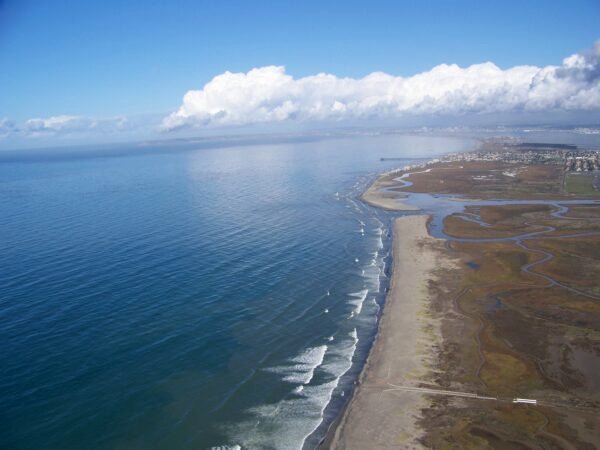Essential Insights
-
Tech Comparison: Scientists confirmed that EMIT’s satellite observations align with on-ground water samples, identifying phycocyanin from cyanobacteria, which poses health risks to humans and animals.
-
Diagnostic Tool: EMIT can reveal wastewater plumes in areas not previously sampled, serving as an early warning system akin to a doctor’s diagnostic tool, according to JPL scientist Christine Lee.
-
‘Smoking Gun’ Findings: Lead researcher Eva Scrivner described EMIT’s results as a clear indication of wastewater contamination in the Tijuana River plume, enhancing data collection in polluted regions.
- Versatile Application: Initially designed for land-based studies, EMIT’s imaging spectroscopy technology has proved valuable for understanding both terrestrial and aquatic environments, surprising and exciting water scientists.
NASA Sensor on Space Station Eyes Contamination off California Coast
NASA’s Earth Surface Mineral Dust Investigation Tool, or EMIT, recently revealed important findings about water quality off the California coast. Positioned on the International Space Station, EMIT detected a wastewater plume from the Tijuana River. This discovery raises new awareness about contamination in coastal areas.
Scientists compared EMIT’s observations with ground samples from the same region. Both sources identified phycocyanin, a pigment associated with cyanobacteria. This organism can cause health issues for humans and animals when ingested or inhaled. As a result, scientists view this finding as a “smoking gun” for mapping contamination.
In light of this, beachgoers now have access to online water-quality dashboards. These tools often rely on field samples; however, EMIT can enhance this effort. From its orbit, EMIT can pinpoint wastewater plumes that might go unnoticed. “It’s like a diagnostic at the doctor’s office that tells you, ‘Hey, let’s take a closer look at this,’” a researcher explained.
Furthermore, the technology behind EMIT, called imaging spectroscopy, has a rich history. Developed at NASA’s Jet Propulsion Laboratory in the 1980s, this technology supports various fields, including agriculture and forestry. Initially designed to map minerals in desert areas, EMIT’s capabilities proved versatile by also detecting water contaminants.
This unexpected use excites researchers. They find EMIT’s consistent data with ground measurements compelling. The ability to analyze coastal contamination from space opens new avenues for environmental monitoring. Scientists believe that EMIT may help close data gaps around polluted sites, making water quality assessments more efficient and effective.
This advancement showcases how space technology can improve everyday life on Earth. By providing timely data on contamination, EMIT enhances public health efforts and contributes to safer coastal experiences. For more information about EMIT, visit the NASA website.
Continue Your Tech Journey
Dive deeper into the world of Cryptocurrency and its impact on global finance.
Stay inspired by the vast knowledge available on Wikipedia.
SciV1

